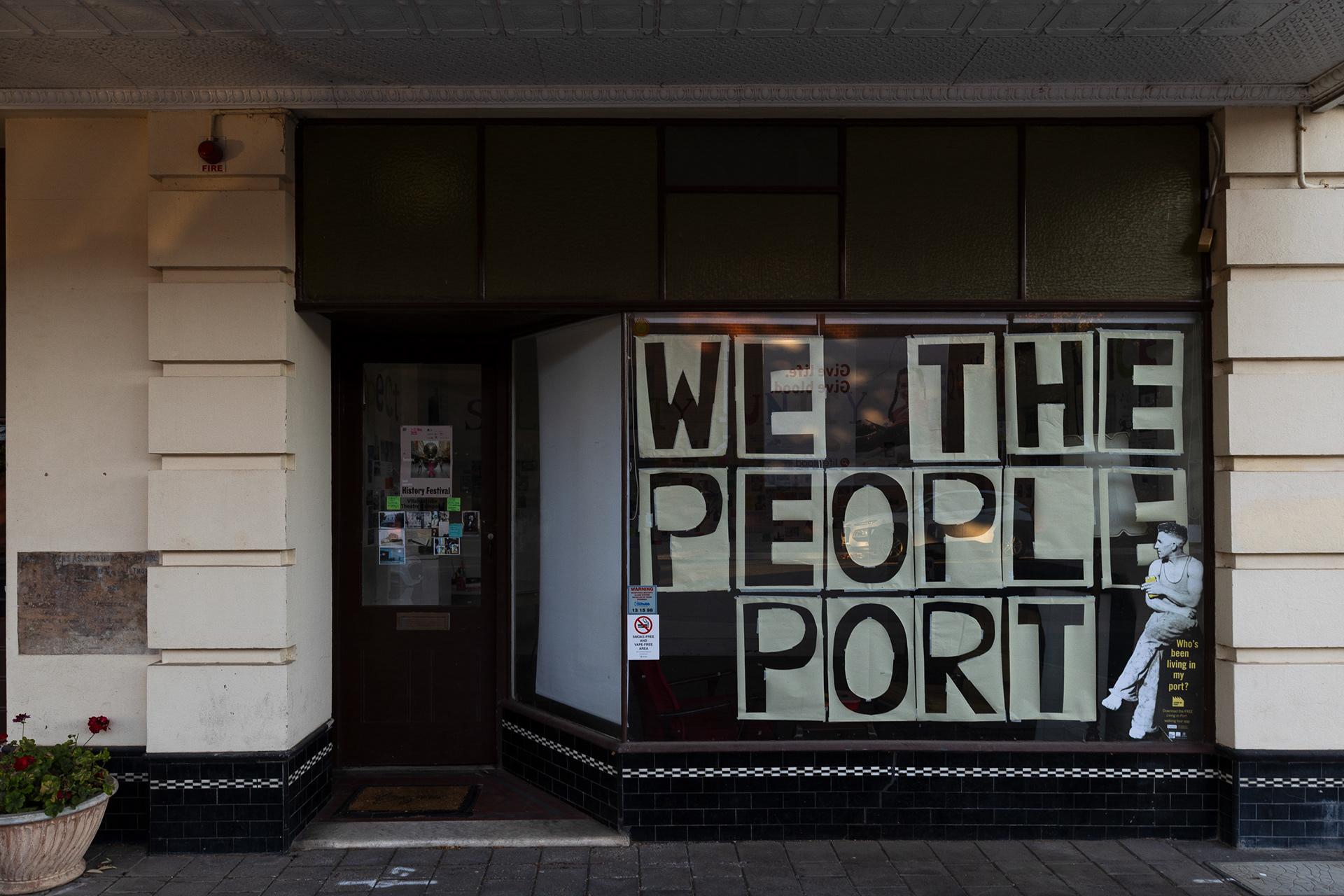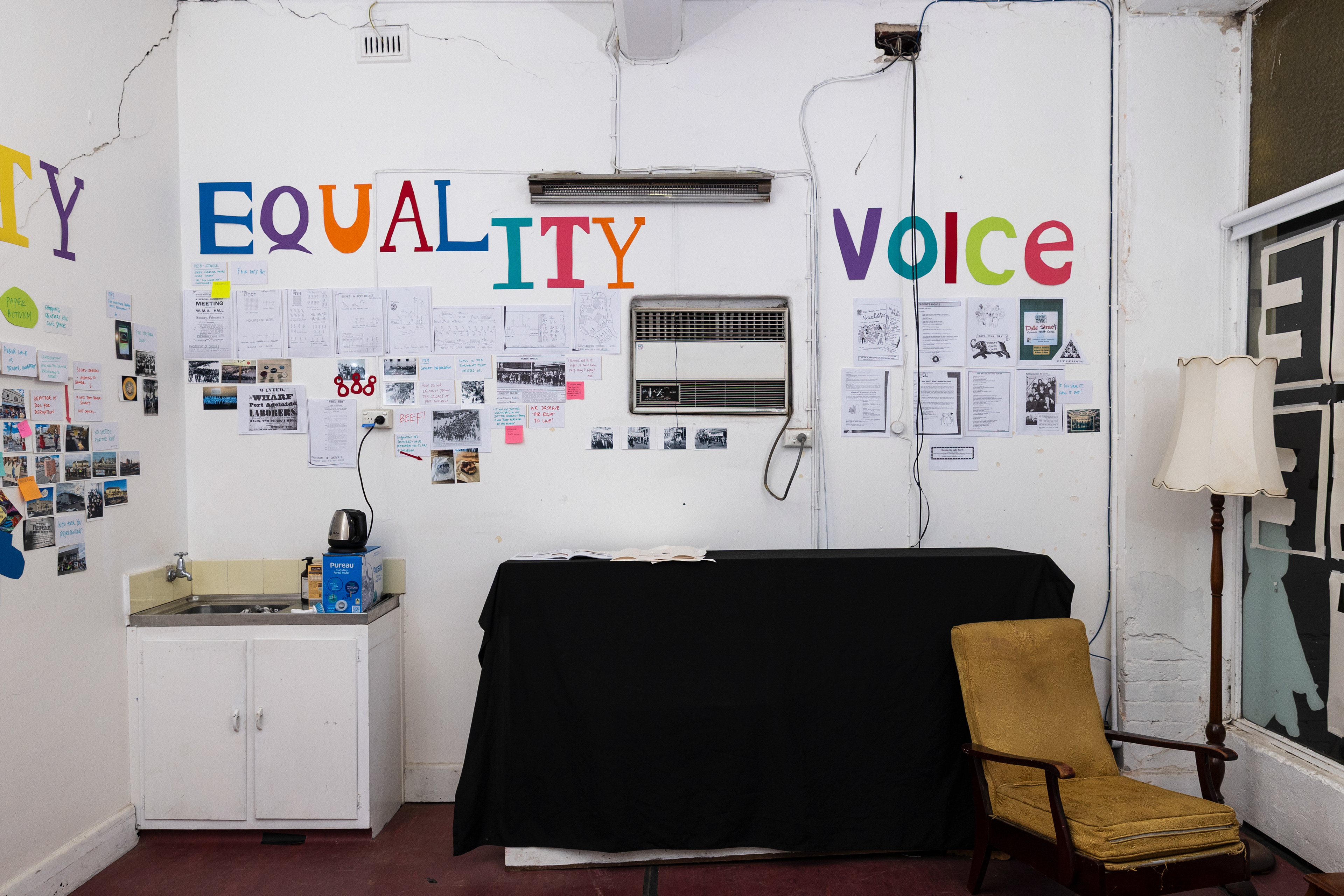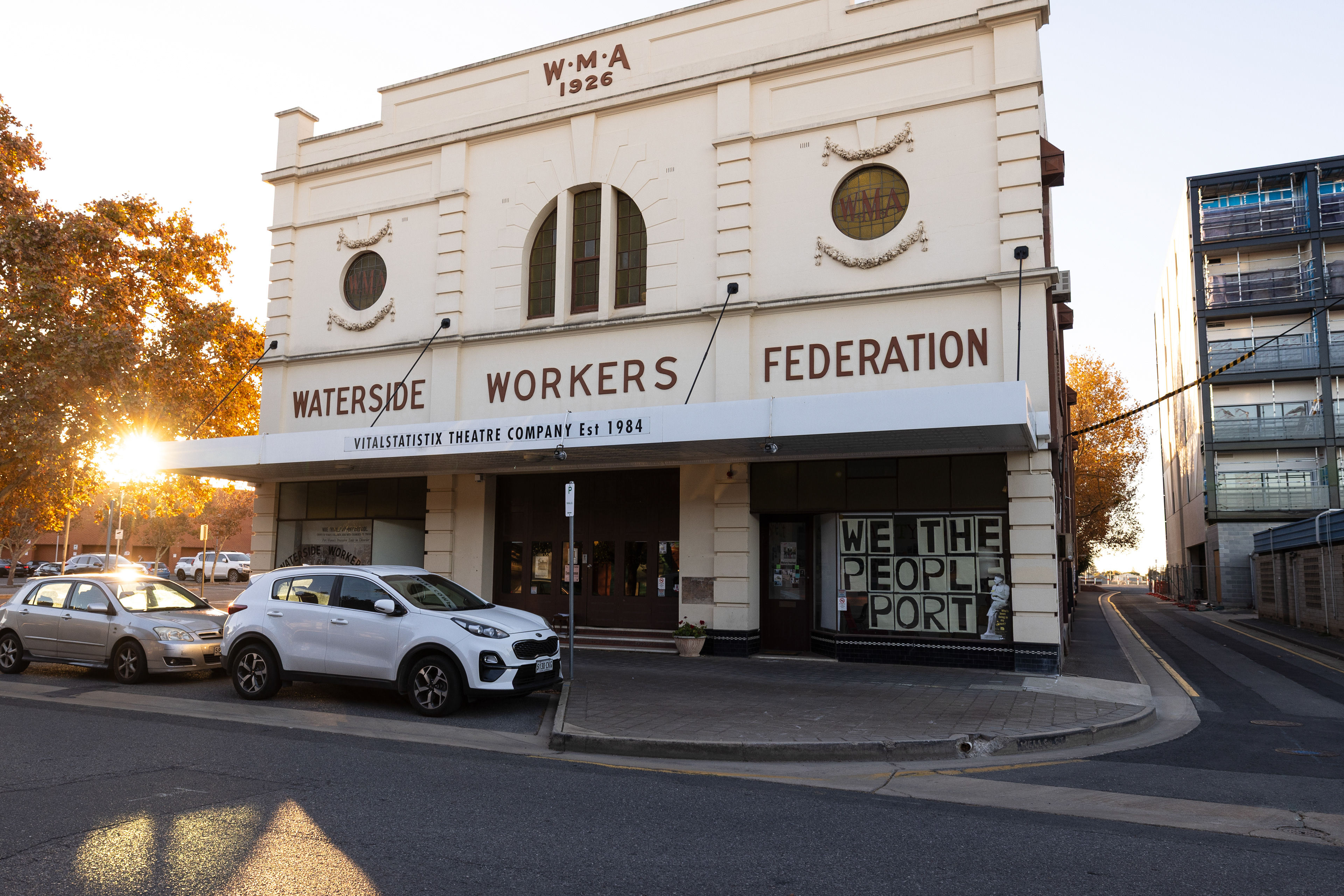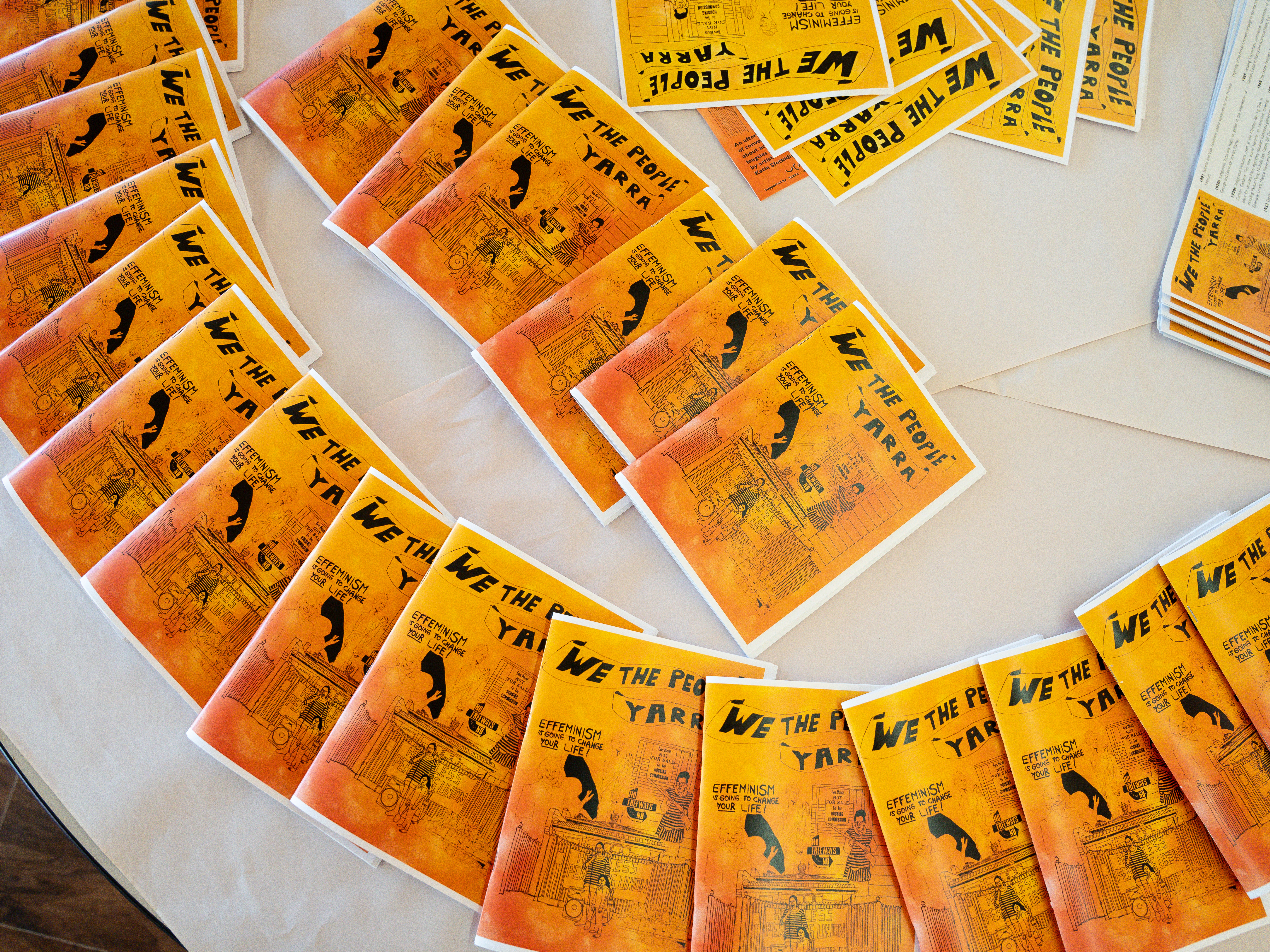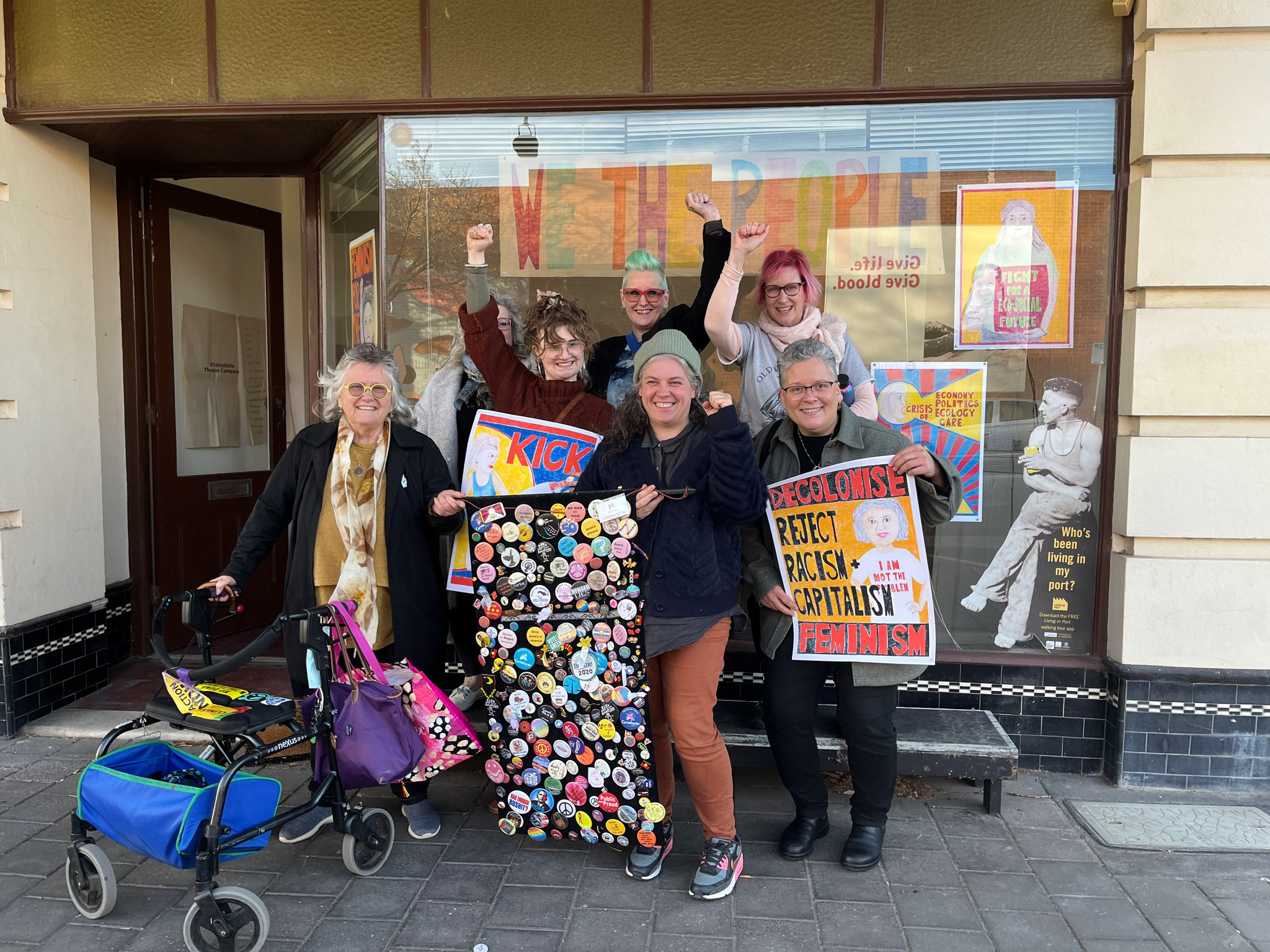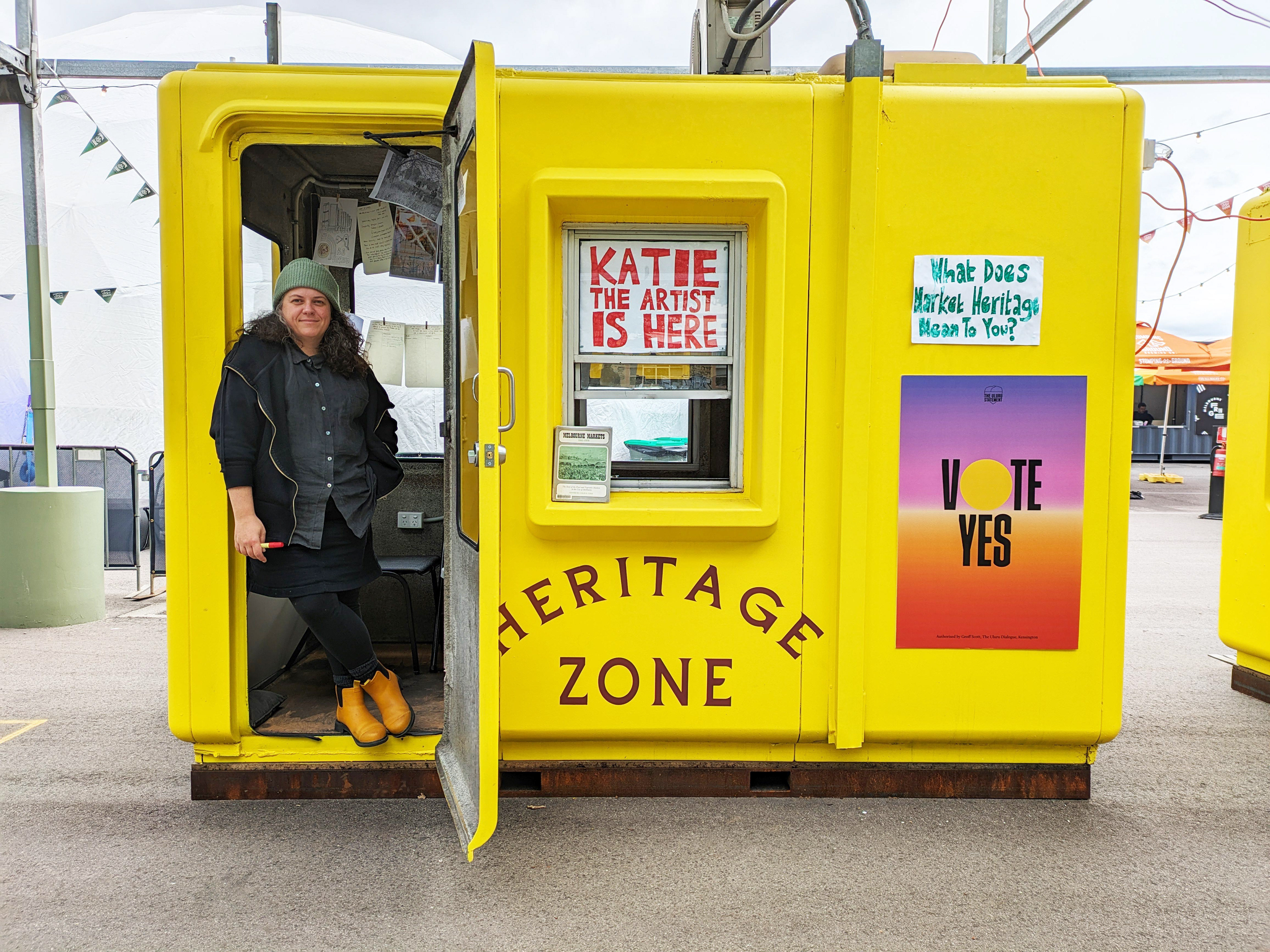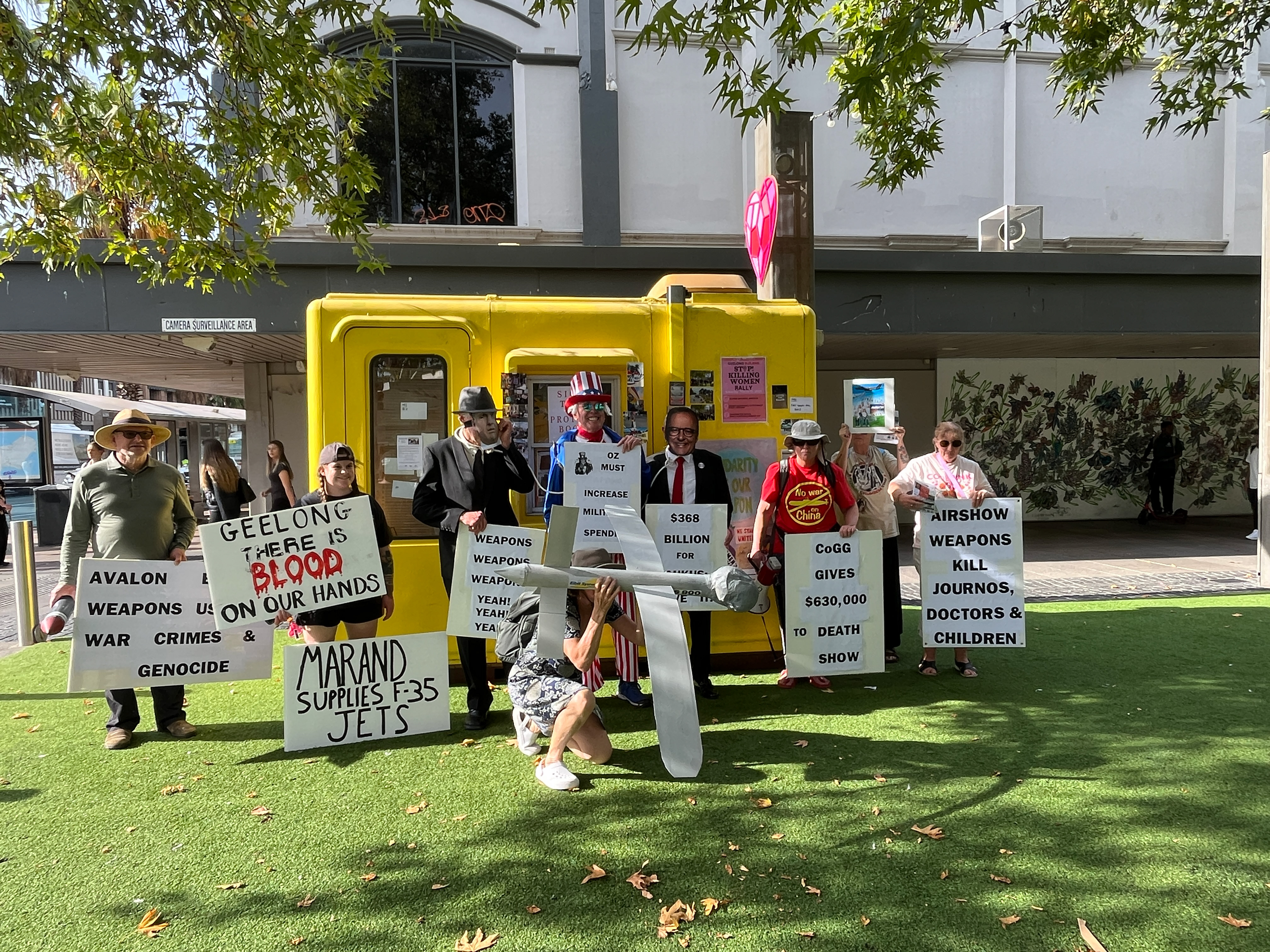Celebrate the vibrant history of activism in Port Adelaide. Join artist Katie Sfetkidis and a group of local activists for an afternoon of insightful and passionate conversations about the rich and varied history of political struggle in the area.
From Aboriginal rights to LGBTQIA+ advocacy, the environment movement to housing and employment rights, Port Adelaide citizens have been leaders in driving social progressive change. Drawing on Sfetkidis’ ongoing research into the legacies of political activism, this event brings together people, stories and ephemera uncovered during her residency at Vitalstatistix. It invites audiences to be part of the ongoing research journey, actively participating in conversations about past campaigns, the importance of solidarity building and how the past can influence the future of progressive activism. Central to this exploration is Sfetkidis’ belief in the transformative power of local communities to effect change. The project aims to celebrate, share, and learn from these histories and to inspire a more socially progressive future.
We The People x Port Adelaide was presented in companionship with The Art of Work is a Work of Art to mark the week of May Day, as part of Vitals’ long term curatorial program stream Bodies of Work.


We The People x Port Adelaide
Hen Vaughan
May 2025
I want you to imagine your way back to the year of 1840 on the Port Adelaide River. Just think what it would have looked like then. No building, just the natural trees, the grasses, the reeds, the black swans on the river, and the Kaurna camps that were there. The whole area was filled with traditional wurlies, with Kaurna people moving up and down. It would have been a wonderful sight in those day to stand on the hill and see all the campfires lit up all the way to the Outer Harbour. It would have been like fairyland.These scene-setting words, the opening paragraph from Aunty Veronica Brodie’s memoir 'My Side of the Bridge’, are chosen to bring the room of disparate but cheerful visitors together for We The People x Port Adelaide. We are at once in the cosy shopfront of Vitalstatistix’s home, the majestic art-deco Waterside Workers’ Hall, and on Yerta Bulti, sovereign Kaurna Country.
It’s federal election day, a pertinent time to gather and sink into an afternoon of meandering talk. We sit in a wonky circle of retro armchairs and black school chairs, initially unsure that everyone will fit, but end up with just the right number. Cups of tea, coffee and a packet of Tim Tams are passed around.
On the shopfront walls and windows, a sea of photographs, diagrams, posters, leaflets, and sticky notes gleaned from Katie’s time spent in the Port, from residencies at Adhocracy in 2022, and in the weeks leading up to today.
Different struggles, perspectives and priorities converge in the room. Introducing ourselves, there are many Port residents – some born and bred here, long steeped in trade union and activist culture that continues to permeate the place, while others have moved to the area more recently, seeking radical company. Former industrial officers, writers, artists, theatre makers, musicians, choir leaders, animators, educators, librarians. All of us are in some sense ‘activists’, and the feeling of being gently united through shared passions is already palpable before the conversation starts.
. . .
We talk about the strikes, rallies and protests that have shaped Port Adelaide’s enduring legacy as a union city and site of workers’ resistance. In 1928, a regression in working conditions and the hiring of non-union labourers led to a three-week strike where waterfront workers clashed with police. Hand-drawn diagrams showing cops and wharfies in configurations throughout the strike are pasted up on the wall, photocopies from a 1958 thesis on the topic.
Later in 1931, thousands gathered in St Vincent Street for a lengthy protest against the state government’s ‘decision to remove beef from rations for the unemployed.”2 These events, now almost a century ago, are ‘still so important to local identity - they still have resonance and are still talked about’.
Though still an active part of the Port’s memory, some people are surprised that ‘union history isn’t well represented in the Port’s museums - only a few small mentions in the Maritime Museum, and the Port Adelaide History Society museum’. How can these stories be retold in historical spaces, or is it enough alone for them to be told between community members and passed on intergenerationally? Who does this history belong to?
Comparisons are made between the Port and other cities with similar working-class histories – one person remembers living in Yorkshire, and the persistence of the UK miners’ strikes in the 1980s in shaping social and political life there. ‘Those who were strike-breakers or scabs were shunned from the community.’
Another person mentions that Geelong’s rich union history (the topic of another iteration of Katie’s project) is now completely submerged, lost to generations of gentrification – ‘you couldn’t walk into a coffee shop and ask about the history, they wouldn’t be able to tell you’. What do different places choose to elevate or ignore?
With so much having changed, another voice laments that ‘it’s difficult to conceive what is lost from these battles when those industries have gone’ – the maritime industry here, or the long-closed coal mines in Yorkshire.
Beyond the focus of this place, some in the room remember the importance of the Vietnam Moratorium protests in the early 70s, and the 2003 Peace Rally against the War on Iraq, huge events that brought thousands of people together and similarly have resonance across generations. ‘Failed’ or abandoned movements like Occupy haunt the conversation now, the sense of possibility felt through moments in time still largely unfulfilled.
A tangent springs up around how many people seem to experience fear, disconnection and paranoia online, which may impact the number of people involved in on-the-ground and local activism. It’s mentioned that some activists believe their efforts are best concentrated through knowledge-sharing and organising online, rather than in their local communities. Despite this, the importance of local action hasn’t been lost for Port residents, who still gather regularly in community groups like Friends of the Port River and Port Environment Forum to address issues specific to the area.
. . .
People are attracted to the Port because of the built colonial history and heritage, but at the same time, the ever-present threat of development has both lingered in conversations for 'the past 20 years, maybe more'.
‘All the boatsheds went - they fought really hard to save them, because that’s our maritime history and heritage. There’s not a lot left, and it’s shameful.’
Someone mentions that ‘the heritage of First Nations people is all here too [in the Port], and has also been built on top of, developed over’. Throughout this conversation, an image of the Port as palimpsest becomes clear - as an enduring base layer, the mangroves, swamplands and beaches invoked earlier by Aunty Veronica Brodie, and the ongoing Kaurna connection to Yerta Bulti; imposed above, centuries of colonial industry have degraded and intoxicated these sites. Within and between each level are different kinds of resistance - the continuing fight to protect and nurture natural systems in place; and the refusal of workers, activists and community members to accept exploitation, and fight against labour injustices.
Now, that very built colonial heritage, the maritime infrastructure, boatsheds and buildings, themselves symptoms of settler-colonial destruction, accrue meaning and contribute to the political culture of the Port. Many types of at-risk heritage are entangled all at once, with the threatening interests of corporate and military development always seeming to loom large, occasionally claiming sites like the iconic sawtooth Shed 26 - but never without staunch community defense.
Katie notes that in the three years since her last visit to the Port, ‘development does seem to be ramping up - so what happens to community connection?’ Despite the ongoing interest in the Port’s development possibilities, a continuing dream in (colonial) public imagination, there’s still a noted stigma from people unwilling to ‘cross over from the leafy suburbs’ on the other side of the city.
Some voices in the room raise concerns that memories of past struggle (and gains) through activism in the community will be lost. Gentrification to some extent ‘brings money to the town, but how do you retain that spirit too?’ Pop-ups create an enticing and trendy atmosphere, mingled with the allure of heritage tourism, but these initiatives ‘‘often thrive on capitalist decay’. It’s said that they activate disused sites for a short time without contributing to a robust ongoing culture.
Another voice notes that artists and culture makers receive ‘the burden of keeping heritage alive, so that newcomers understand the complexity of the place they are in’ through public artworks and projects like this one. So ‘how do we make this history public’, alongside embracing new ideas for the future - and who is responsible?
…
The conversation shifts inevitably towards the water, which runs through First Nations, settler and working-class histories of the Port, leading us to the layered, ‘thick present’. What memories does it hold, and how do people use it now?
Industry is still present in the Port, and continues to intersect with the water in new ways, especially since the expansion of the Osborne Naval Shipyard to accommodate nuclear-powered submarine building, as part of the AUKUS agreement.
‘It’s changed a lot with AUKUS and submarine building - there used to be beaches along both sides that are now private - Mutton Cove, Snapper Point, Pelican Point. This is the last time we might have access to those spaces… many boats dock at Outer Harbour still, but the general public can’t access it … it is like a fortress, with giant fences and security cameras. Twenty years ago this was still accessible and unfenced’.
Despite the risks and possibilities of further pollution and impact to Yerta Bulti, and the continued need for community attention and action around this, there’s a hopeful tone in the space. In the room is a full generational circle - some members of the discussion remember learning to swim as children in the Port canal, held ‘afloat by a makeshift floating device held by my dad’. Though many lament the river’s pollution in subsequent years due to industrial activity, its mentioned that ‘areas of the river are safe enough now for the first time’ since colonial pollution began, and children are starting to take swimming lessons in the river again.
. . .
The scope of this reflection is not to dredge up statistics or clear facts about Port Adelaide, but to trace the flow of conversation, including tangents, speculations and unfinished thoughts. Somewhere along the way, a voice in the room asks Katie to clarify ‘the impulse behind this work’, behind inviting us to reflect together. She says that it comes from ‘trying to find spaces that are more complicated than just what happens online. There’s something about being in person that allows messiness.’ This is the texture of gathering and letting conversation unfurl.
The afternoon comes to a natural close and for me, the question of how to continue honouring and understanding these legacies is clear - through conversations like this, sharing memories and perspectives, and acknowledging histories not only as solid, factual records, but what happens when we remember together, in place.
‘People know the history of activism here… it feels more present than in other places. I wish everywhere was like this, in a way!’
. . .
All unattributed quotes are included from the We The People x Port Adelaide conversation and have been intentionally left anonymous.
1. Veronica Brodie and Mary-Anne Gale, My Side of the Bridge: The Life Story of Veronica Brodie, Wakefield Press, 2002.
2. E.I. Curnow, Shall We Strike?, B.A. thesis, University of Adelaide, 1958.
3. Donna Haraway, Staying with the Trouble: Making Kin with the Chthulucene, Duke University Press, 2016.
